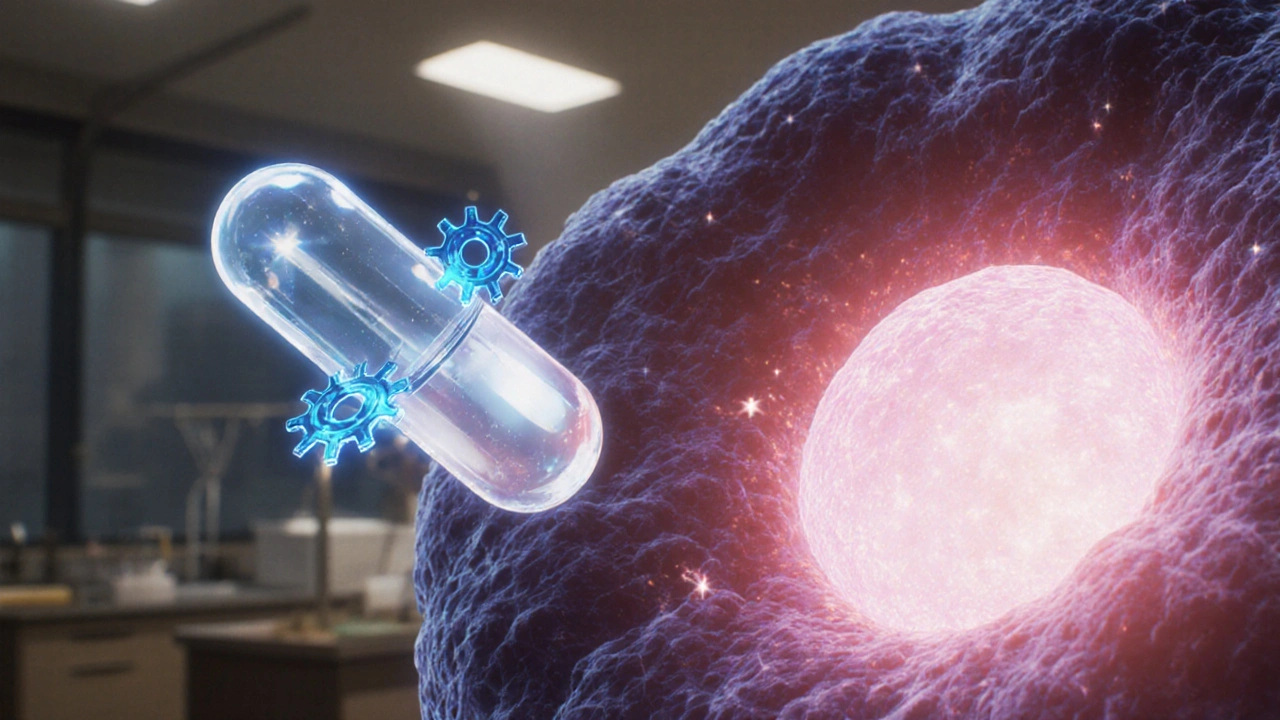CDK4/6 Inhibitors: How They Work and What They Mean for Cancer Treatment
When talking about CDK4/6 inhibitor, a class of drugs that block cyclin‑dependent kinases 4 and 6, halting the progression of cells from the G1 to S phase of the cell cycle. Also known as cyclin‑dependent kinase 4/6 inhibitor, it targets a core driver of uncontrolled cell division in many solid tumors. By binding to the ATP pocket of CDK4 and CDK6, these agents prevent phosphorylation of the retinoblastoma protein, effectively putting a brake on tumor growth. The result is a slower disease course, especially in hormone‑responsive cancers where the cell‑cycle pathway is a key vulnerability. CDK4/6 inhibitor therapy has become a backbone of modern oncology, reshaping how clinicians approach treatment plans.
Key Related Entities
The most common setting for these drugs is breast cancer, particularly estrogen‑receptor‑positive, HER2‑negative disease. In this context, the inhibitor is often combined with endocrine therapy to extend progression‑free survival. One of the first‑in‑class agents, palbociclib, received approval after showing a 10‑month median improvement in patients who had progressed on prior hormone therapy. Its sister compounds, ribociclib and abemaciclib, share a similar mechanism but differ in dosing schedules and side‑effect profiles—ribociclib tends to cause more liver‑related lab changes, while abemaciclib can lead to higher rates of diarrhea. All three illustrate the semantic triple: CDK4/6 inhibitors → target → cell‑cycle kinases, cell‑cycle kinases → control → tumor proliferation, and breast cancer → treated with → CDK4/6 inhibitors. These relationships help clinicians decide which drug fits a patient’s overall health, co‑medications, and tolerance.
Beyond breast cancer, researchers are testing CDK4/6 inhibitors in lung adenocarcinoma, melanoma, and even certain sarcomas, where the same G1 checkpoint dysfunction drives disease. Real‑world use shows that managing neutropenia, hepatotoxicity, or QT‑interval changes requires routine blood work and dose adjustments. Resistance can emerge through loss of retinoblastoma function or up‑regulation of cyclin E, prompting investigations into combination strategies with PI3K or MAPK pathway blockers. As the evidence base grows, oncologists are building personalized regimens that blend hormonal agents, targeted therapies, and immunotherapy. Below you’ll find a curated list of articles that dive deeper into drug comparisons, side‑effect management, and the latest clinical trial data, giving you practical tools to navigate the evolving landscape of CDK4/6 inhibitor therapy.

